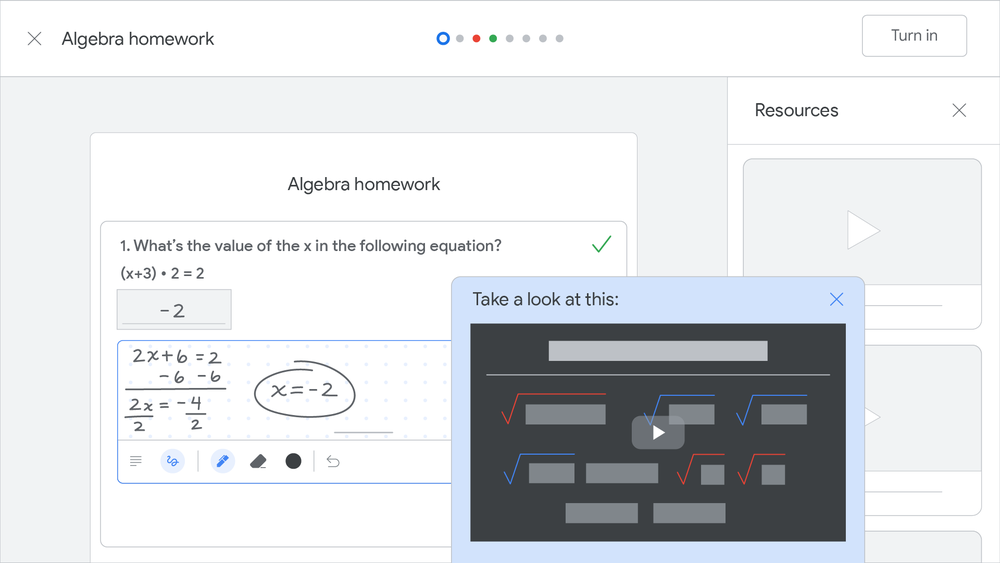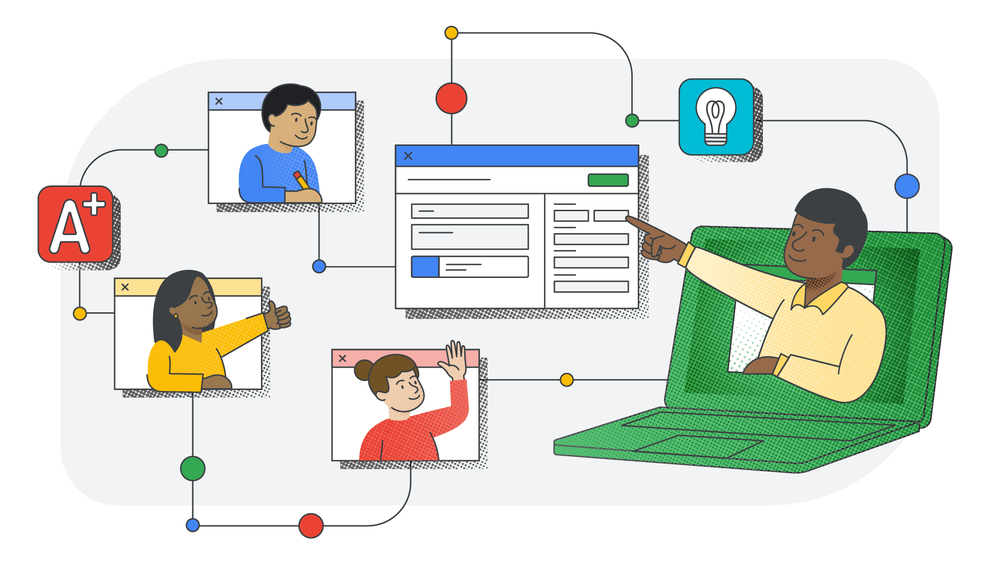Twelve years ago, Shantanu Sinha left his job to join his long-time friend Sal Khan’s new venture. At the time, Sal was spending his days making educational YouTube videos. It was an unusual career choice for both of them. But they saw what was possible when students had more agency over their learning and how technology could play a role. Together they started the online education platform Khan Academy, and Shantanu worked there for five years.
Today, Shantanu is the head of Google for Education. His team works to improve teaching and learning with technology, and one promising area is their work with adaptive learning technology. This emerging, AI-driven technology supports tailored learning experiences for students and helps amplify teacher instruction.
To get a crash course on adaptive learning technology and what it means for students and teachers, we talked to Shantanu.
What exactly is adaptive learning technology?
The concept of adaptive learning has been around for decades. It refers to a type of learning where students are given customized resources and activities to address their unique learning needs. For example, if a student struggles with adding fractions, a teacher might offer 1:1 tutoring or additional practice problems. You can see the concept of adaptive learning play out in gaming. When I was a kid I remember playing Carmen Sandiego and noticing how the system was tailored to me and changed whenever I got something wrong.
What’s new is applying recent AI advances to this concept, which opens up a whole new set of possibilities to transform the future of school into a personal learning experience.
Can you share an example of what this might look like?
Imagine you’re a student stuck on a math problem. With 25 other students in your class, you can’t always get immediate help, leaving you frustrated and diminishing your confidence to complete future problems. Now imagine a different scenario. You’re stuck on a problem, but instead of growing frustrated, you receive a helpful hint or video that gives you exactly what you need to unblock you. You realize what you need to do differently, complete the math problem correctly and feel more confident in your ability to learn.
Early attempts at adaptive learning worked only for very specific content and curricula. With recent AI advances in language models and video understanding, we can now apply adaptive learning technology to almost any type of class assignment or lesson at an unprecedented scale. When students receive individualized, in-the-moment support, the results can be magical.

Tell us about the magic.
We recently talked to an educator who is testing out a new adaptive learning feature that we’re developing called practice sets in Google Classroom. The feature allows teachers to create interactive assignments and provides students with real-time feedback. He said the instant feedback that kids received was like having a teaching assistant in the classroom at all times. The technology helped give students 1:1 attention and validation — so they knew right away whether they got a problem correct or incorrect — and drove students’ intrinsic motivation and engagement through the roof.
I saw a similar phenomenon back when I was part of Khan Academy. Over time, students not only became more proficient with subject matter content, but also in their ability to learn new material. They learned how to learn.
How does adaptive learning technology help teachers?
Adaptive learning technology saves teachers time and provides data to help them understand students’ learning processes and patterns. For example, with practice sets, teachers can quickly see a student’s attempts at a given problem, so they know where a student got stuck and can identify areas for improvement. Since assignments are auto-graded, teachers can devote more time to making sure that each student gets the instruction and practice they need to succeed.
So is the future of education more personal?
Learning is inherently personal. Education should feel personal too, but there are time and resource constraints. As we build toward a more personal future for education, adaptive learning technology can help us get there faster. Our goal is to power the pursuit of personal potential — for both teachers and students — in and out of the classroom.
Over these past two years, technology has influenced where people can learn, but has it changed the way people learn?
When I look back to the start of my career and where the world is now, it’s clear that having immediate access to information has fundamentally transformed how, when and where we learn. Today, learning is a muscle we flex easily and often. At Google, we see this play out each day: 85% of U.S. YouTube viewers surveyed say they learn or improve their skills on the platform and more than a billion people turn to Search each day to discover something new.
As we think about the evolution of learning, what role can Google play?
We aim to be a learning company — for school, for work and for life. Last year, we launched a site all about our ongoing commitment to help everyone in the world learn anything in the world. Learning is personal. I’m excited to continue working with our partners to build toward a more personal future of education. When we apply the right technology to the process of teaching and learning, exciting things start to happen.
Article by Alicia Cormie. Read full article here.



